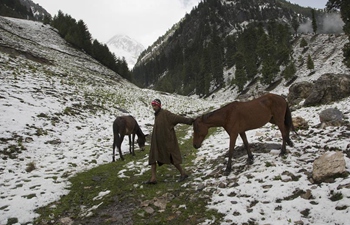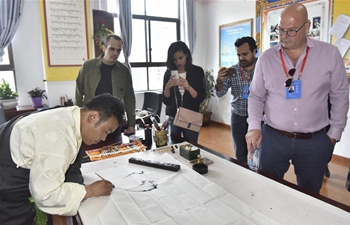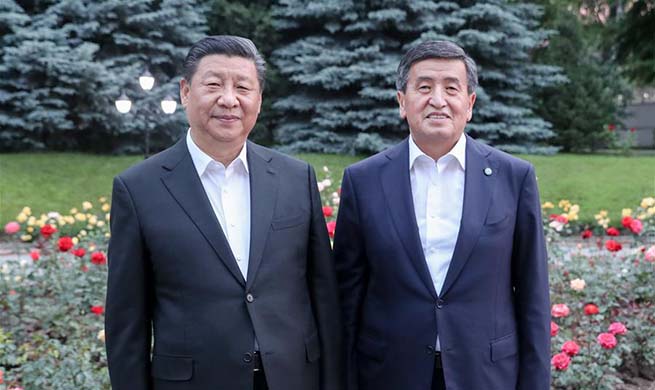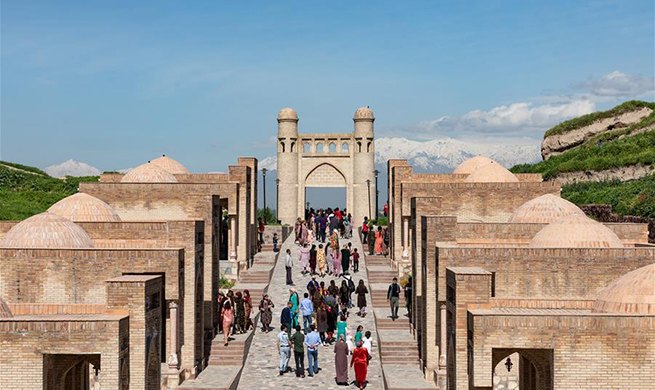URUMQI, June 13 (Xinhua) -- It has been three stressful weeks since Sadyrbek, a Kyrgyz Ph.D. candidate studying in China, became fully consumed with the revision of his doctoral dissertation.
Born in the northern Kyrgyz town of Talas, Sadyrbek has spent five years studying in Urumqi, capital of northwest China's Xinjiang Uygur Autonomous Region.
"At the moment, every minute counts," he said.
Sadyrbek lost his father when he was 12. The hard-working young man did not fail his father's last wish and was enrolled in Kyrgyz National University to study geography.
Fond of Bruce Lee's kung-fu movies, he took an optional course in the Chinese language.
"There is a Chinese saying that goes 'Good company on the road is the shortest cut,'" he said. "And one more language brings one more opportunity for me."
Sadyrbek learned Chinese history, calligraphy, traditional culture and martial arts as he studied in Xinjiang Normal University for his master's degree. The days he has spent in Xinjiang have deepened his understanding of China, which first impressed him with its products sold in his home country.
"The rich history and culture are what's behind China's rapid growth," he said.
Geographical proximity has brought a growing number of students from Central Asia to Xinjiang. A total of 55 Central Asian students -- 32 doctors and 23 in master's programs -- have graduated from the Xinjiang Institute of Ecology and Geography, Chinese Academy of Sciences, where Sadyrbek currently studies.
Furkat, who comes from Tajikistan and also studied in the institute, prefers to learn more about China by traveling and has already made visits to many cities across the country.
He chooses a Chinese gift for his girlfriend in Tajikistan every year to give her when he returns, and she has fallen in love with traditional Chinese paintings and tea.
"She also wants to study in China," Furkat said.
Statistics from China's Ministry of Education showed that the country has become a popular destination for students from other Asian countries to pursue their studies, sweeping a growing number of graduates off their feet.
Last year, the country received 492,200 students from 196 countries and regions, among which 260,600 students came from 64 Belt and Road countries, accounting for 52.95 percent of the total.
There are much more diversified choices for international students, with natural science becoming more appealing to them in recent years, the ministry said.
Sadyrbek lays his interest in the development of tourism in Kyrgyzstan and China, doing research on social and economic influences.
"Hope to stay here after graduation," he said.

















